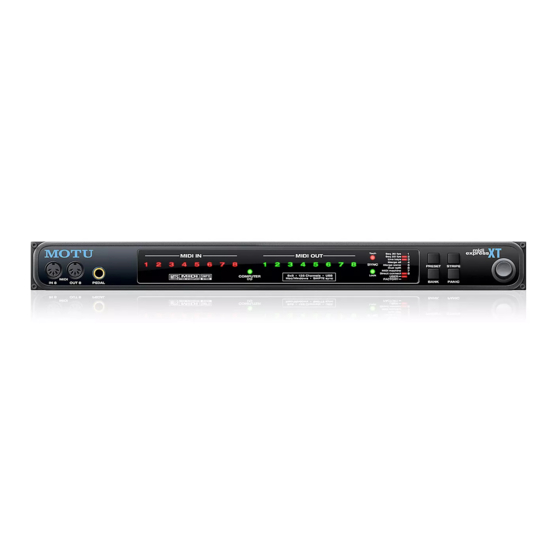Table of Contents
Advertisement
User Guide
MIDI Express XT
MIDI Express 128
micro express
micro lite
Mark of the Unicorn, Inc.
1280 Massachusetts Avenue
Cambridge, MA 02138
Business voice: (617) 576-2760
Business fax: (617) 576-3609
Tech support fax: (617) 354-3068
Tech support email: techsupport@motu.com
Web site: http://www.motu.com
Advertisement
Chapters
Table of Contents


















Need help?
Do you have a question about the MIDI Express XT and is the answer not in the manual?
Questions and answers